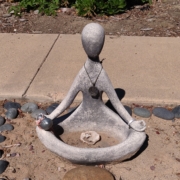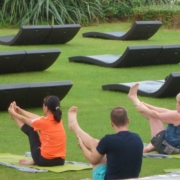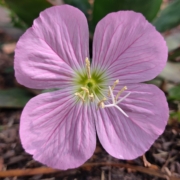As an intervention, what impact might yoga have in the lives of female survivors of intimate partner violence?
I know intimate partner violence (IPV) is not a pleasant or easy topic to think and talk about, yet it is the only way forward. When you think about IPV, I suspect most people first think about physical violence. Yet, did you know that psychological violence is the most common form? IPV, in all of its forms, is a serious public health issue, with an estimated more than 30% of women in the US experiencing it. So, as a yoga teacher, I think it is vital to learn how the practice of yoga might support (or harm) female survivors, as a simple yoga class of 10 might have up to 3 or 4 survivors attending.
It is important to acknowledge that not all yoga styles and/or teachers might be appropriate for such survivors. More and more, in the healing arts, a concept of ‘trauma-informed’ is emerging. However, simply taking one course on trauma-informed medicine does not make a trauma-informed provider. In fact, I have learned of many stories (both as a yoga teacher and a psychotherapist) where a teacher or provider claimed to be trauma-informed and actually activated the survival response in the encounter! Therefore, it is critcal to ensure IPV survivors experience the practice of yoga in a way that ensures physical, emotional, mental and psychological safety.
The consequences of psychological IPV include, but are not limited to, depression/suicidal ideation, anxiety, PTSD, low self-esteem, somatic complaints and substance abuse. So, as a holistic healer, I have come to view these conditions as symptoms of trauma and not diagnoses. As such, I am able to offer a different perspective that validates a person’s lived experience and honor their needs on their healing journey. There is much research on how yoga can reduce particular symptoms of trauma, yet more research is needed to clarify the distinct aspects of the yoga being offered and how, specifically the practice is trauma-informed.
I was very excited to come across a very recent research study from Exhale to Inhale in NYC that did just that! This study included 526 female survivors and data was collected over 3 years and across 66 domestic violence agencies. It clearly describes what makes the yoga trauma-informed and the target symptoms of stress, somatic complaints and self-efficacy. This study showed that trauma-informed yoga is a capacity-building intervention with female IPV survivors.
To read more, click the link below:












